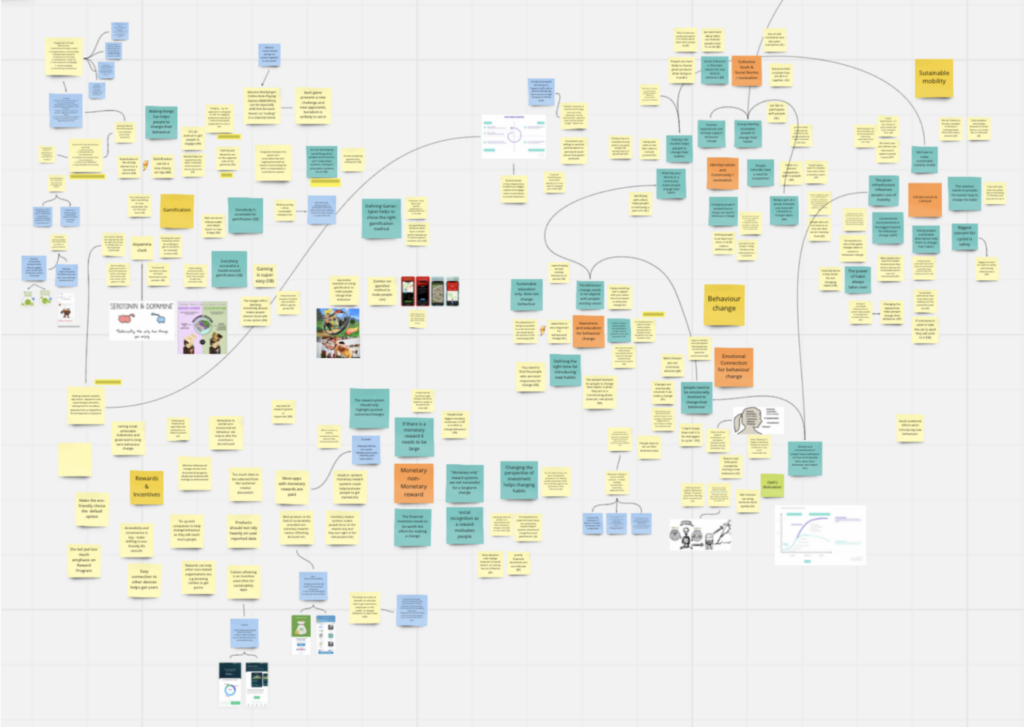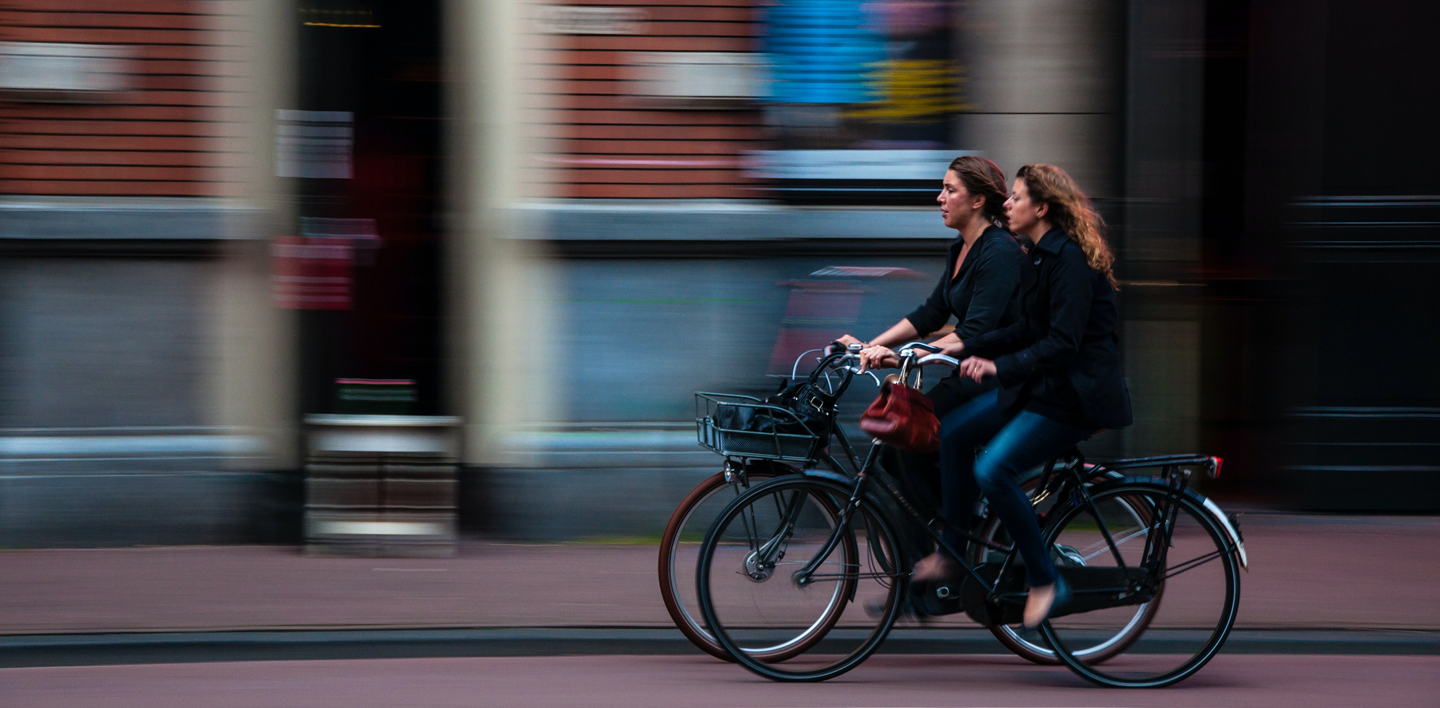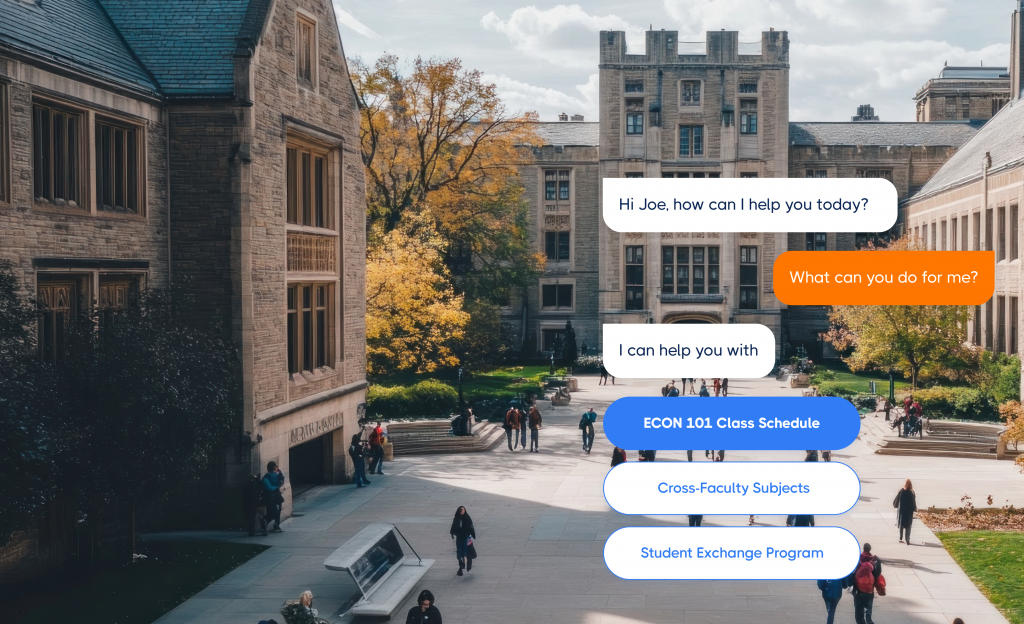Spark Works is an international innovation consultancy based in Switzerland that helps organizations uncover new perspectives through human-centred research and strategic advisory services. They were working with a European Insurance company to change people’s behaviour toward more sustainable mobility habits. They wanted to test if a bottom-up, community-driven approach could inspire behavioural shifts faster than traditional top-down policy efforts.
Spark Works partnered with us to help bring this concept to life — quickly. The product vision was to create a tool that nudges users toward sustainability by rewarding positive behaviour. Our goal was to combine human-centred research with rapid ideation, finally bringing the concept to life through a clickable prototype that could be used to start conversations with users and validate assumptions. The idea was piloted in Switzerland, with a plan to scale to other European cities.
Expertise
- UX Research
- Prototyping
- Product Strategy
- Test Design
OUTCOMES
- Created 8 unique product concepts, each with mapped flows, key features, and articulated value props.
- Developed 2 clickable prototypes tested on-ground in Zurich, gathering valuable user insights.
- Delivered a detailed test design plan with 5 behaviour-change experiments — providing a robust framework for future pilots.
APPROACH
Research
Since the product was based in Europe, Spark Works led primary research on the ground, while we focused on secondary research, gathering global insights and exploring comparable solutions. This dual approach helped us validate patterns from both local and global lenses. We stayed tightly coordinated through tools like Miro and Asana, and regular syncs ensured momentum and alignment.

A key behavioural insight we uncovered was the potential of nudging—subtle cues that guide users toward better choices without coercion. From urban design to sustainability campaigns, nudging proved effective in shifting daily decisions through small, well-placed prompts. This idea became central to many of our concepts—and has since influenced how we design for behaviour change across our broader portfolio.
Three principles shaped our concept development:
- Gamification sustains engagement when it adds meaning rather than distraction.
- Community and healthy competition create belonging and social reinforcement.
- Non-monetary rewards—layered, effort-based, and timely—are more enduring than transactional incentives.
Concept Development
We shortlisted 8 distinct digital concepts, each with a clear USP, mapped user flow, features and low-fidelity sketches. To articulate value and experience, we paired each with a PRFAQ (Press Release + FAQ).
One of our favourite concepts (not selected) was a virtual group challenge to “travel” to a city like Athens by walking or cycling—unlocking virtual tours, recipes, and other rewards along the way. Other ideas included a peer-to-peer marketplace for sharing equipment like bikes and skateboards, and a “Last Mile Companion” service, where neighbours could support each other with errands, while meeting their sustainable goals.
The Chosen One
The concept selected was a journey planner for sustainable urban transport—giving users all they needed to move through the city easily and consciously. We created two variants:
A Map-based route planner, nudging users toward sustainable paths with visual cues like shaded paths, bike stands, and scenic detours—while less sustainable routes appeared dull and uninviting.

A Community-based experience, where users could take part in local challenges, track their eco-performance, and bump into fellow travellers nearby.

Both concepts were prototyped and tested on the streets of Zurich. The community-based approach resonated more strongly with users, showing greater promise in sparking long-term behavioural change.
Test Design
Beyond the initial guerrilla testing, we designed five ideas of how to test the product to assess real-world traction— ranging from lightweight awareness-building pilots like ads + crowdfunding to more immersive, gamified challenges powered by interactive prototypes. For each, we defined hypotheses, success metrics, and behavioural indicators like referrals, route selections, and engagement frequency. These tests offered a clear path — from quick validation tools to deeper, behaviour-shifting pilots — with the understanding that long-term impact requires sustained and scalable engagement.
Small Nudges, Big Shifts
This project marked our entry into sustainable mobility—a space where behaviour, infrastructure, and values converge. We leaned into design thinking not just as a process, but as a mindset: empathetic, iterative, and grounded in real human needs. Rather than chasing shiny solutions, we listened, prototyped, and tested—knowing lasting change begins with understanding.
Designing for sustainability means asking different questions. Not just what works, but what are we encouraging? What futures are we normalising? In building this product, we were reminded that real change is powered by human things—community, motivation, joy. And that the smallest nudge, at the right moment, can shift behaviour in meaningful, lasting ways.


